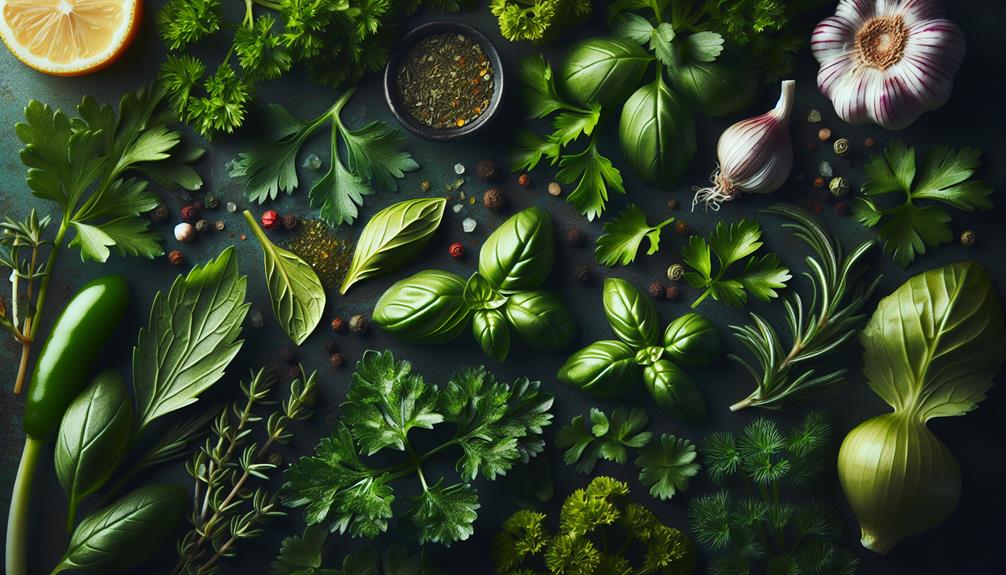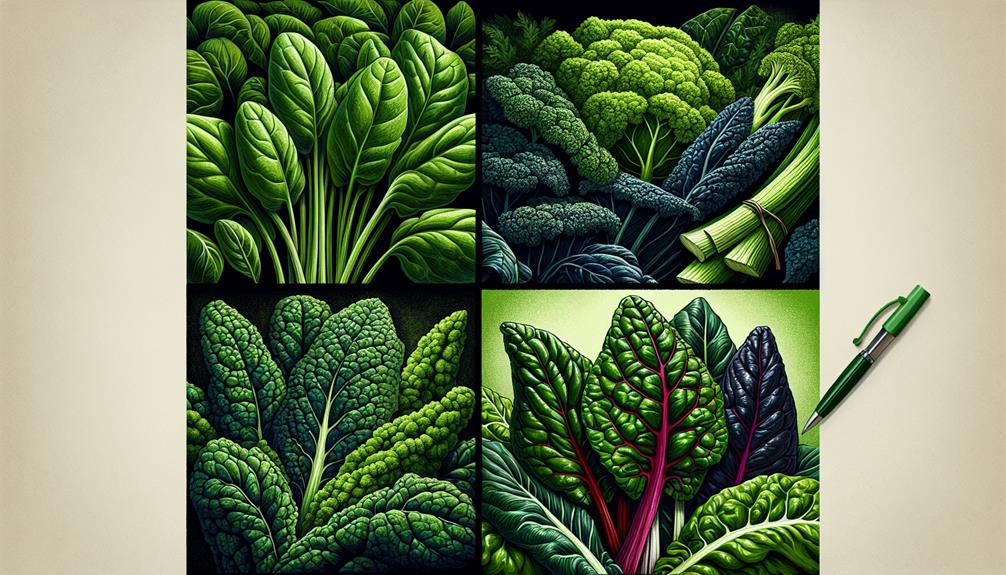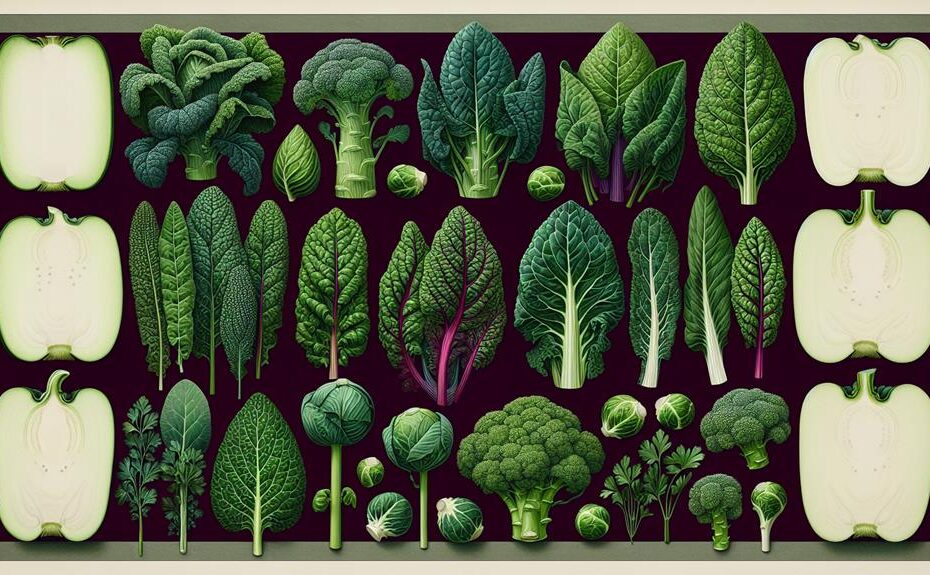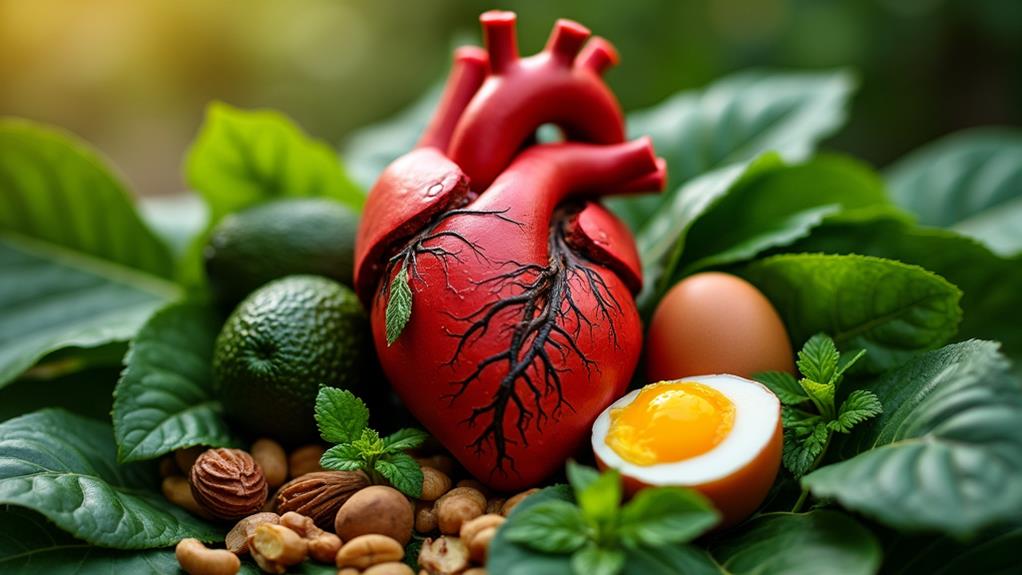





Boost your Vitamin K1 by incorporating leafy greens like spinach, kale, and Swiss chard. Try versatile cruciferous vegetables like broccoli and Brussels sprouts. Enjoy herbs and spices such as oregano and turmeric. Snack on nuts like walnuts and seeds like flaxseeds. Non-cruciferous options like asparagus and spinach are beneficial too. Important for blood clotting and heart health, Vitamin K1 can be found in various foods.
Key Takeaways
- Leafy greens like spinach and kale are rich sources of Vitamin K1, perfect for smoothies and salads.
- Cruciferous vegetables such as broccoli and Brussels sprouts offer anti-inflammatory benefits and Vitamin K1.
- Nuts and seeds like walnuts and flaxseeds provide heart-healthy fats and Vitamin K1, great for sprinkling on meals.
- Incorporate herbs and spices such as oregano and turmeric for added Vitamin K1 and antioxidant properties.
- Non-cruciferous vegetables like asparagus and spinach, when paired with healthy fats, enhance Vitamin K1 absorption.
Leafy Greens
When incorporating leafy greens into your diet, you are ensuring a rich intake of Vitamin K1, essential for proper blood clotting and bone health. Leafy greens such as spinach, kale, and Swiss chard are versatile ingredients that can easily be incorporated into your meals. For a quick and nutritious boost, try adding a handful of spinach to your morning smoothie. You can also experiment with different smoothie recipes by combining kale with fruits like bananas and berries for a revitalizing treat packed with Vitamin K1.
Salad dressings are another excellent way to include leafy greens in your diet. Opt for a homemade vinaigrette using olive oil, balsamic vinegar, and a sprinkle of chopped spinach or arugula. This not only enhances the flavor of your salad but also increases your Vitamin K1 intake. Additionally, consider blending leafy greens into creamy dressings for added nutrients. By getting creative with smoothie recipes and salad dressings, you can easily incorporate Vitamin K1-rich leafy greens into your daily meals.
Cruciferous Vegetables
Cruciferous vegetables, such as broccoli, cabbage, and Brussels sprouts, are renowned for their high content of Vitamin K1, an essential nutrient for various aspects of health. These vegetables offer a multitude of benefits due to their rich nutrient profile. Cruciferous vegetables are known for their anti-inflammatory properties, potential cancer-fighting abilities, and support in maintaining heart health. They are also packed with fiber, vitamins, and minerals, making them a great addition to a balanced diet.
When cooking cruciferous vegetables, preserving their nutritional value is crucial. To retain the most nutrients, opt for steaming or sautéing instead of boiling, as boiling can cause water-soluble vitamins to leach out. Avoid overcooking to maintain their crunchiness and flavor. Seasoning with herbs, garlic, or lemon juice can enhance the taste without adding excessive salt or unhealthy fats. Experimenting with different cooking methods and flavor combinations can make cruciferous vegetables a delicious and nutritious part of your meals.
Herbs and Spices

Herbs and spices are essential additions to your culinary repertoire, offering not only flavor enhancement but also potential health benefits due to their diverse array of nutrients and bioactive compounds. These flavorful seasonings have been used for centuries not only to enhance the taste of dishes but also for their medicinal properties. Incorporating a variety of herbs and spices into your meals can elevate the nutritional content without adding extra calories, salt, or sugar.
Culinary benefits of herbs and spices include their antioxidant properties, which help combat oxidative stress in the body. For example, oregano is rich in antioxidants that may support overall health. Turmeric contains curcumin, a compound known for its anti-inflammatory effects. Cinnamon is not only a delicious addition to sweet treats but also has been studied for its potential blood sugar-regulating properties.
Nuts and Seeds
Nuts and seeds are nutrient-dense foods that offer a wide range of health benefits due to their rich content of essential vitamins, minerals, and healthy fats. These powerhouses of nutrition are also excellent sources of Vitamin K1. Walnuts, almonds, and flaxseeds are particularly high in this vitamin.
Nutritional benefits of nuts and seeds extend beyond Vitamin K1. They are rich in heart-healthy fats, protein, fiber, and various antioxidants. Incorporating a variety of nuts and seeds into your diet can help support overall health and well-being.
When it comes to cooking tips for nuts and seeds, try incorporating them into your meals by sprinkling them on salads, yogurt, or oatmeal. You can also add them to smoothies or use them as toppings for dishes like stir-fries or roasted vegetables. Roasting nuts can enhance their flavor, but be mindful of portion sizes as they are energy-dense foods. Remember to store nuts and seeds in a cool, dry place to maintain their freshness and nutrient content.
Vegetables (Non-Cruciferous)

When considering your vegetable choices, explore the array of nutrient-rich options available within the category of non-cruciferous vegetables. Non-cruciferous vegetables like spinach, green beans, and asparagus are excellent sources of Vitamin K1. In addition to Vitamin K1, these vegetables are packed with essential nutrients like fiber, vitamins, and minerals that contribute to overall health.
Nutrient absorption is key when it comes to maximizing the benefits of Vitamin K1 from non-cruciferous vegetables. To enhance absorption, consider pairing these vegetables with a healthy fat source like olive oil or avocado. This combination can help increase the bioavailability of Vitamin K1 and other fat-soluble vitamins present in these vegetables.
When it comes to cooking methods for non-cruciferous vegetables, lightly steaming or sautéing them can help preserve their nutrient content. Avoid overcooking, as this can lead to nutrient loss. Opt for quick cooking methods to retain the maximum nutritional value of these vitamin K1-rich vegetables.
Fruits
Exploring the vibrant world of fruits reveals a variety of options rich in essential nutrients, including Vitamin K1. Fruits such as kiwi, grapes, and blueberries are not only delicious but also provide significant nutritional benefits. Kiwis, for instance, are packed with Vitamin K1, offering around 72.5 mcg per fruit. Grapes, whether red, green, or black, contain Vitamin K1 and make for a invigorating and healthy snack. Blueberries, known for their antioxidant properties, also contribute to your Vitamin K1 intake.
Including fruits in your diet can be enjoyable and simple. Try incorporating them into your meals or snacks. You can also blend them into invigorating smoothie recipes for a quick and nutritious treat. Smoothies made with a combination of Vitamin K1-rich fruits like kiwi and blueberries can be a great way to boost your intake of this essential nutrient. Whether eaten whole, sliced over yogurt, or blended into a smoothie, fruits are a versatile and tasty addition to your diet.
Grains and Cereals

Rich in essential nutrients, grains and cereals offer a variety of options to enhance your Vitamin K1 intake. When focusing on Vitamin K1, wheat germ and oat bran are two excellent choices to contemplate. Wheat germ, the embryo of the wheat kernel, is a concentrated source of various nutrients, including Vitamin K1. Just two tablespoons of wheat germ can provide around 13.5 micrograms of Vitamin K1, which is approximately 17% of the daily recommended intake for adults. Oat bran, a high-fiber outer layer of the oat groat, is another grain that can contribute to your Vitamin K1 levels. Incorporating oat bran into your diet can offer you an additional source of Vitamin K1, supporting your overall nutrient intake. Whether added to your breakfast cereal, baked goods, or as a topping for yogurt, both wheat germ and oat bran can be versatile additions to help you meet your Vitamin K1 needs.
Oils
To further enhance your intake of Vitamin K1, consider including oils into your diet as they can provide a valuable source of this essential nutrient. Oils such as soybean oil, canola oil, and olive oil are rich in Vitamin K1. When using oils in your cooking methods, opt for healthier alternatives like olive oil, which not only enhances the flavor of your dishes but also offers numerous health benefits.
Cooking methods play an important role in retaining the Vitamin K1 content in oils. Light cooking methods such as sautéing or using oils in salad dressings are better choices to preserve the nutrient content compared to deep-frying. Health benefits associated with consuming oils rich in Vitamin K1 include improved blood clotting, bone health, and heart health. By incorporating these oils into your diet, you can make sure you are getting an adequate amount of Vitamin K1 while also reaping the benefits of a healthy source of dietary fats.



